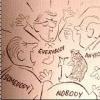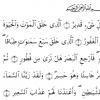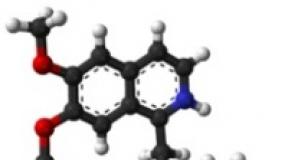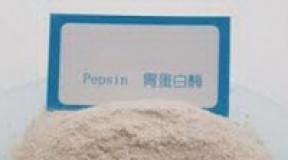Azz Long - instructions for use. ACC Long effervescent tablets Possible side effects
Release form: Solid dosage forms. Pills.

General characteristics. Structure:
Active substance: acetylcysteine \u200b\u200b600 mg
excipients: citric acid - 625 mg; sodium bicarbonate - 327 mg; sodium carbonate - 104 mg; mannitol - 72.8 mg; lactose - 70 mg; ascorbic acid - 75 mg; sodium cyclamate - 30.75 mg; sodium saccharinate dihydrate - 5 mg; sodium citrate dihydrate - 0.45 mg; blackberry flavor "B" - 40 mg
Description. Effervescent tablets, 100 mg, 200 mg: white, round, flat tablets, scored (200 mg), with a blackberry scent.
Effervescent tablets, 600 mg: white, round tablets, beveled, scored on one side, with a smooth surface, with a blackberry scent. Appearance solution: when dissolving 1 table. in 100 ml of water, a colorless transparent solution with a blackberry smell is obtained.
Pharmacological properties:
ACTS Long is a mucolytic, expectorant agent used to dilute sputum in diseases of the respiratory system, accompanied by the formation of thick mucus. Acetylcysteine \u200b\u200bis a derivative of the amino acid cysteine. The mucolytic effect of the drug is chemical in nature. Due to the free sulfhydryl group, ACC Long breaks the disulfide bonds of acidic mucopolysaccharides, which leads to depolymerization of mucoproteins in sputum and a decrease in mucus viscosity and promotes expectoration and discharge of bronchial secretions. ACTS Long remains active in the presence of purulent sputum.
Acetylcysteine \u200b\u200balso has antioxidant pneumoprotective properties, which is due to the binding of chemical radicals by sulfhydryl groups and, thus, to their neutralization. In addition, the drug helps to increase the synthesis of glutathione - an important factor of intracellular defense not only against oxidative toxins of exogenous and endogenous origin, but also against a number of cytotoxic substances. This feature of ACTS Long makes it possible to effectively use the latter in case of paracetamol overdose.
After oral administration acetylcysteine \u200b\u200bis rapidly and completely absorbed and metabolized in the liver to form cysteine, a pharmacologically active metabolite, as well as diacetylcysteine, cystine, and further - mixed disulfides. Bioavailability is very low - about 10%. Cmax in blood plasma is achieved within 1-3 hours after administration. Plasma protein binding - 50%. Acetylcysteine \u200b\u200bis excreted by the kidneys as inactive metabolites (inorganic sulfates, diacetylcysteine).
T½ is determined mainly by rapid biotransformation in the liver and is about 1 hour. In the case of a decrease in liver function, T½ increases to 8 hours.
Indications for use:
Treatment of acute and chronic diseases bronchopulmonary system, requiring a decrease in the viscosity of sputum, improving its discharge and expectoration.
Important! Check out the treatment
Method of administration and dosage:
Adults and children over the age of 14 are prescribed 600 mg (1 tablet) 1 time per day.
Children under the age of 14 and in cases where the dose should be divided into several doses, use acetylcysteine \u200b\u200bin another dosage form or the appropriate dosage.
The drug is taken after meals. Dissolve the tablet in a glass of water and drink the solution as quickly as possible. In some cases, due to the presence of a stabilizer in the composition of the preparation - ascorbic acid, the prepared solution can be left for about 2 hours until it is used. Additional fluid intake enhances the mucolytic effect of the drug.
The duration of treatment for chronic diseases is determined by the doctor, depending on the nature and course of the disease. For acute uncomplicated diseases, ACC Long is used for 5-7 days.
Application features:
It is recommended to take the drug with caution in patients with stomach ulcers and duodenum a history, especially in the case of simultaneous reception of others medicinesthat irritate the stomach lining.
There are isolated reports of severe skin reactions (Stevens-Johnson and Lyell syndromes) when taking acetylcysteine, so in case of changes in the skin or mucous membranes, you should immediately stop using the drug and consult your doctor regarding its further use.
Acetylcysteine \u200b\u200bshould be prescribed with caution in patients with asthma because of the possible development.
Acetylcysteine \u200b\u200bshould be administered to patients with liver and kidney diseases with caution in order to avoid the accumulation of nitrogen-containing substances in the body.
The use of acetylcysteine \u200b\u200bcauses dilution of bronchial secretions. If the patient is unable to effectively cough up sputum, postural drainage and bronchoaspiration should be performed.
Effervescent tablets contain sodium compounds. This should be considered in patients on a salt-free, low sodium diet.
Acetylcysteine \u200b\u200baffects the metabolism of histamine, therefore, long-term therapy should not be prescribed to patients with histamine intolerance, as this can lead to symptoms of intolerance ( headache, itching).
The drug contains lactose, therefore, patients with rare hereditary forms of galactose intolerance, lactase deficiency or glucose-galactose malabsorption syndrome should not use the drug.
Application during pregnancy or lactation. During pregnancy and lactation, the use of acetylcysteine \u200b\u200bis possible only if the intended benefit to the mother outweighs the potential risk to the fetus or child.
The ability to influence the speed of reaction when driving vehicles or other mechanisms. Does not affect.
Children. It is used in children over the age of 14 years.
Side effects:
To describe the frequency side effects use the following classification: very often (≥1 / 10), often (≥1 / 100,<1/10), нечасто (≥1/1000, <1/100), редко (≥1/10 000, <1/1000), очень редко (<1/10 000).
From the side of the cardiovascular system: infrequently -,.
From the nervous system: infrequently -.
From the side of the skin: infrequently - allergic reactions (itching, rash, angioedema).
On the part of the organ of hearing: infrequently - ringing in the ears.
On the part of the respiratory system: rarely - bronchospasm (mainly in patients with hyperreactivity of the bronchial system, which is associated with BA), rhinorrhea.
From the gastrointestinal tract: infrequently -, abdominal pain, bad breath.
General disorders: often - fever.
Some severe skin reactions (Stevens-Johnson and Lyell syndromes) have been reported. With the use of acetylcysteine, the occurrence was very rarely reported, which were most often associated with the development of hypersensitivity reactions. There have been cases of decreased platelet aggregation, but there is no clinical confirmation of this. Quincke's edema, facial edema, hemorrhages, anaphylactic reactions (including anaphylactic shock) have been reported very rarely.
Interaction with other medicinal products:
The use of antitussives with acetylcysteine \u200b\u200bcan increase sputum congestion due to a decrease in the cough reflex.
With simultaneous use with antibiotics such as tetracyclines (excluding doxycycline), ampicillin, amphotericin B, cephalosporins, aminoglycosides, their interaction with the thiol group of acetylcysteine \u200b\u200bis possible, which leads to a decrease in the activity of both drugs. Therefore, the interval between taking these drugs should be at least 2 hours. This does not apply to cefixime and loracarbef.
Activated carbon reduces the effectiveness of acetylcysteine.
It is not recommended to dissolve acetylcysteine \u200b\u200bin one glass with other drugs.
Acetylcysteine \u200b\u200breduces the severity of the hepatotoxic effect of paracetamol.
There is a synergism of acetylcysteine \u200b\u200bwith bronchodilators.
Acetylcysteine \u200b\u200bcan donate cysteine \u200b\u200band increase glutathione levels, which helps detoxify oxygen free radicals and certain toxic substances in the body.
The simultaneous intake of nitroglycerin and acetylcysteine \u200b\u200bcan lead to an increase in the vasodilating effect of nitroglycerin.
During contact with metals or rubber, sulfides with a characteristic odor are formed, therefore, glassware should be used to dissolve the drug.
Contraindications:
Hypersensitivity to acetylcysteine \u200b\u200bor other components of the drug. and the duodenum in the acute stage, hemoptysis,.
Overdose:
There are no data on cases of overdose with oral administration of acetylcysteine.
Symptoms: nausea, vomiting, diarrhea.
Therapy: symptomatic treatment.
Storage conditions:
In a dry, dark place at a temperature not exceeding 30 ° C. Close the tube tightly after taking the pill. Keep out of the reach of children. The shelf life of the drug ACC Long is 3 years.
Vacation conditions:
Without recipe
Packaging:
Effervescent tablets, 100 mg, 200 mg. 20 or 25 table. in an aluminum or plastic tube. 1 tube of 20 tab. or 2 or 4 tubes of 25 table. in a cardboard box. 4 tab. in strips of 3-layer material: paper / PE / aluminum. 15 strips in a cardboard box.
Effervescent tablets, 600 mg. 6, 10 or 20 tab. in polypropylene tubes. 1 tube in a cardboard box.
Mucolytic drug
Active substance
Release form, composition and packaging
ACC 100
◊ Effervescent tablets white, round, flat-cylindrical, with a blackberry smell; there may be a faint sulfur smell; the recovered solution is colorless transparent with a blackberry smell; a slight sulfuric odor is possible.
Excipients: anhydrous citric acid - 679.85 mg, - 194 mg, sodium carbonate anhydrous - 97 mg, mannitol - 65 mg, anhydrous lactose - 75 mg, ascorbic acid - 12.5 mg, sodium saccharinate - 6 mg, sodium citrate - 0.65 mg, blackberry flavor "B" - 20 mg.
20 pcs. - aluminum tubes (1) - cardboard packs.
◊ Effervescent tablets white, round, flat-cylindrical, with a line on one side, with a blackberry scent; there may be a faint sulfur smell; reconstituted solution - colorless transparent with a blackberry odor; a slight sulfuric odor is possible.
Excipients: anhydrous citric acid - 558.5 mg, sodium bicarbonate - 200 mg, sodium carbonate anhydrous - 100 mg, mannitol - 60 mg, anhydrous lactose - 70 mg, - 25 mg, sodium saccharinate - 6 mg, sodium citrate - 0.5 mg, blackberry flavor "B" - 20 mg.
20 pcs. - plastic tubes (1) - cardboard packs.
ACC Long
◊ Effervescent tablets white, round, flat-cylindrical, with a chamfer and a line on one side, with a blackberry scent; there may be a faint sulfur odor; the recovered solution is colorless transparent with a blackberry smell; a slight sulfuric odor is possible.
Excipients: anhydrous citric acid - 625 mg, sodium bicarbonate - 327 mg, sodium carbonate - 104 mg, - 72.8 mg, lactose - 70 mg, ascorbic acid - 75 mg, sodium cyclamate - 30.75 mg, sodium saccharinate dihydrate - 5 mg, sodium citrate dihydrate - 0.45 mg, blackberry flavor "B" - 40 mg.
10 pieces. - polypropylene tubes (1) - cardboard packs.
20 pcs. - polypropylene tubes (1) - cardboard packs.
pharmachologic effect
Acetylcysteine \u200b\u200bis a derivative of the amino acid cysteine. It has a mucolytic effect, facilitates the discharge of sputum due to a direct effect on the rheological properties of sputum. The action is due to the ability to break the disulfide bonds of mucopolysaccharide chains and cause depolymerization of mucoproteins in sputum, which leads to a decrease in the viscosity of sputum. The drug remains active in the presence of purulent sputum.
It has an antioxidant effect due to the ability of its reactive sulfhydryl groups (SH-groups) to bind to oxidative radicals and thus neutralize them.
In addition, acetylcysteine \u200b\u200bpromotes the synthesis of glutathione, an important component of the antioxidant system and chemical detoxification of the body. The antioxidant effect of acetylcysteine \u200b\u200bincreases the protection of cells against the damaging effects of free radical oxidation inherent in an intense inflammatory response.
With the prophylactic use of acetylcysteine, there is a decrease in the frequency and severity of exacerbations in patients with chronic bronchitis and cystic fibrosis.
Pharmacokinetics
Absorption and distribution
The absorption is high. Oral bioavailability is 10%, which is due to the pronounced effect of the "first pass" through the liver. The time to reach C max in the blood is 1-3 hours.
Plasma protein binding - 50%. Penetrates the placental barrier. There are no data on the ability of acetylcysteine \u200b\u200bto penetrate the BBB and be excreted in breast milk.
Metabolism and excretion
It is rapidly metabolized in the liver to form a pharmacologically active metabolite - cysteine, as well as diacetylcysteine, cystine and mixed disulfides.
It is excreted by the kidneys in the form of inactive metabolites (inorganic sulfates, diacetylcysteine). T 1/2 is about 1 hour.
Pharmacokinetics in special clinical situations
Liver dysfunction leads to an increase in T 1/2 to 8 hours.
Indications
- diseases of the respiratory system, accompanied by the formation of viscous, difficult to separate sputum (acute and chronic bronchitis, obstructive bronchitis, tracheitis, laryngotracheitis, pneumonia, lung abscess, bronchiectasis, bronchial asthma, COPD, bronchiolitis, cystic fibrosis);
- acute and chronic sinusitis;
- otitis media.
Contraindications
- peptic ulcer of the stomach and duodenum in the acute phase;
- hemoptysis;
- pulmonary bleeding;
- pregnancy;
- lactation period (breastfeeding);
- children up to 14 years old (ACC Long);
- children up to 2 years old (ACC 100, ACC 200);
- lactase deficiency, lactose intolerance, glucose-galactose malabsorption;
- hypersensitivity to drug components.
Carefullythe drug should be used in patients with a history of gastric ulcer and duodenal ulcer; with bronchial asthma, obstructive bronchitis; hepatic and / or renal failure; histamine intolerance (long-term use of the drug should be avoided, since acetylcysteine \u200b\u200baffects the metabolism of histamine and can lead to signs of intolerance, such as headache, vasomotor rhinitis, itching); varicose veins of the esophagus; diseases of the adrenal glands; arterial hypertension.
Dosage
The drug is taken orally after meals. Effervescent tablets should be dissolved in 1 glass of water. The tablets should be taken immediately after dissolution, in exceptional cases, you can leave the finished solution for 2 hours. Additional liquid intake enhances the mucolytic effect of the drug.
Adults and adolescents over 14 years old It is recommended to prescribe the drug 200 mg (2 tab. ACC 100, 1 tab. ACC 200) 2-3 times / day, which corresponds to 400-600 mg of acetylcysteine \u200b\u200bper day, or 600 mg (ACC Long) 1 time / day.
The drug is recommended to take 1 tab. (ACC 100) or 1/2 tab. (ACTS 200) 2-3 times / day, which corresponds to 200-300 mg of acetylcysteine \u200b\u200bper day.
When cystic fibrosischildren over the age of 6 the drug is recommended to be taken in 2 tabs. (ACC 100) or 1 tab. (ACTS 200) 3 times / day, which corresponds to 600 mg of acetylcysteine \u200b\u200bper day. Children aged 2 to 6 - 1 tab. (ACC 100) or 1/2 tab. (ACTS 200) 4 times / day, which corresponds to 400 mg of acetylcysteine \u200b\u200bper day.
When short-term colds the duration of admission is 5-7 days. When chronic bronchitis and cystic fibrosis the drug should be used for a longer period to prevent infections.
Side effects
According to the WHO, adverse effects are classified according to their frequency of development as follows: very often (≥1 / 10), often (≥1 / 100,<1/10), нечасто (≥1/1000, <1/100), редко (≥1/10 000, <1/1000), очень редко (<10 000), частота неизвестна (частоту возникновения нельзя определить на основании имеющихся данных).
Allergic reactions: infrequently - itching, rash, exanthema, urticaria, angioedema; very rarely - anaphylactic reactions up to shock, Stevens-Johnson syndrome, toxic epidermal necrolysis (Lyell's syndrome).
From the respiratory system: rarely - shortness of breath, bronchospasm (mainly in patients with bronchial hyperreactivity in bronchial asthma).
On the part of the cardiovascular system:infrequently - lowering blood pressure, tachycardia.
From the digestive system: infrequently - stomatitis, abdominal pain, nausea, vomiting, diarrhea, heartburn, dyspepsia.
On the part of the organ of hearing: infrequently - tinnitus.
Others: infrequently - headache, fever; in isolated cases - the development of bleeding as a manifestation of a hypersensitivity reaction, a decrease in platelet aggregation.
Overdose
Symptoms: in case of an erroneous or deliberate overdose, such phenomena as diarrhea, vomiting, stomach pains, heartburn, nausea are observed.
Treatment: carrying out symptomatic therapy.
Drug interactions
With the simultaneous use of acetylcysteine \u200b\u200band antitussives due to suppression of the cough reflex, sputum stagnation may occur.
With the simultaneous use of acetylcysteine \u200b\u200band antibiotics for oral administration (penicillins, tetracyclines, cephalosporins, etc.), the latter may interact with the thiol group of acetylcysteine, which can lead to a decrease in antibacterial activity. Therefore, the interval between taking antibiotics and acetylcysteine \u200b\u200bshould be at least 2 hours (except for cefixime and loracarbef).
Simultaneous use with vasodilators and nitroglycerin can lead to an increase in the vasodilator effect.
special instructions
In bronchial asthma and obstructive bronchitis, acetylcysteine \u200b\u200bshould be administered with caution under systematic monitoring of bronchial patency.
With the use of acetylcysteine, cases of severe allergic reactions such as Stevens-Johnson syndrome and Lyell's syndrome have been reported very rarely. If changes occur in the skin and mucous membranes, the patient should immediately stop taking the drug and consult a doctor.
When dissolving the drug, it is necessary to use glassware, avoid contact with metals, rubber, oxygen, easily oxidized substances.
You should not take the drug immediately before bedtime (the preferred time of admission is before 18.00).
1 effervescent tablet ACTS 100 or ACTS 200 corresponds to 0.006 XE, 1 effervescent tablet ACTS Long - 0.001 XE.
No special precautions are required when disposing of unused ACC effervescent tablets.
Influence on the ability to drive vehicles and use mechanisms
There are no data on the negative effect of the drug on the ability to drive vehicles and mechanisms, when used in recommended doses.
Pregnancy and lactation
Due to insufficient data, the use of the drug during pregnancy is contraindicated.
If necessary, the use of the drug during lactation should decide on the termination of breastfeeding.
Childhood use
The use of the drug is contraindicated in children under 14 years of age (for ACC Long), in children under 2 years of age (for ACC 200).
The shelf life is 3 years.
After taking the pill, the tube should be tightly closed.
Active substance: acetylcysteine
Hexal (Germany)
Composition and form of release.1 sachet (ACC hot drink) with 3 g of granulate for preparation of hot drink contains acetylcysteine \u200b\u200b200 or 600 mg; in a box of 20 and 6 sachets, respectively.
1 sachet of granulate for oral solution - 100 or 200 mg; the package contains 20 sachets.
1 effervescent tablet - 100 (ACC 100), 200 (ACC 200) or 600 (ACC long) mg; in a package of 20 (ACC 100 and ACC 200) or 10 (ACC-long) pieces.
1 ampoule (3 ml of solution) - 300 mg; in a package of 5 ampoules of 3 ml.
Pharmachologic effect.Expectorant, mucolytic. Destroys substances (acidic mucopolysaccharides), on which the viscosity of phlegm depends, increases its fluidity and facilitates separation. Increases the synthesis of endogenous antioxidants (for example, glutathione) that protect the respiratory system from the toxic effects of poisons (aldehydes, phenols, other chemical agents) and other adverse environmental factors (tobacco smoke).
Features and differences from other drugs of the group or other dosage forms.Liquefies phlegm without significantly increasing its volume. Well absorbed when taken orally. The action develops in 30-90 minutes and lasts 2-4 hours.
Indications. Diseases occurring with the release of viscous, thick phlegm : acute and chronic bronchitis , tracheitis , pneumonia , laryngitis , sinusitis , cystic fibrosis , tuberculosis , bronchiectasis ; primary renal amyloidosis , tracheostomy , surgical operations (prevention of complications), trauma chest (prevention pneumonia), after bronchoscopy, treatment with cyclophosphamide, as an antidote (antidote) for paracetamol poisoning.
Warnings and Precautions.The drug should not be taken in case of individual hypersensitivity or intolerance to cow's milk, children and adolescents under 14 years of age (ACC-Long), with gastric ulcer and duodenal ulcer in the acute phase, a tendency to bleeding (hemoptysis, pulmonary hemorrhage).
It is prescribed with caution to patients with diseases of the liver, kidneys and adrenal glands.
Method of administration and dosage.Inside, after eating. The contents of 1 sachet are dissolved in 1 glass of water. The solution is prepared immediately before use. Adults and children over 14 years old - the contents of one sachet (200 mg) 2-3 times a day or 600 mg 1 time a day (ACC-Long) for 4-5 days. Children from 6 to 14 years old - 200 mg 2 times a day or 100 mg 2-3 times a day, from 2 to 6 years old - 100 mg 2-3 times a day, newborns and children under 2 years old (only indications for life and under medical supervision) - 10 mg / kg of body weight 2 times a day. The course of treatment is 5-14 days (determined by the doctor).
For cystic fibrosis, children over the age of 6 years - 200 mg 3 times a day, from 2 to 5 years - 100 mg 4 times a day. For infants, starting from the 10th day of life, 50 mg 3 times a day. For adults weighing more than 30 kg, the dose can be increased to 800 mg / day.
With intrabronchial administration - up to 300 mg / day. Intratracheally, 1 ml of a 10% solution is injected every hour. Intramuscularly (for respiratory tract injuries, coma, in children's practice) for adults 1-2 ml of 10% solution 2-3 times a day, for children over 1 year old - 0.5-1 ml of 10% solution 2 times a day.
If necessary, ACC can be administered intravenously (2-5 ml of 10% solution).
Side effects and possible complications.Gastrointestinal disorders, headache, allergic reactions. In patients with bronchial asthma and chronic obstructive bronchitis, bronchospasm may increase.
Interaction with other drugs, substances, drinks, products.Cannot be combined with antitussives (sputum stagnation in the respiratory tract is possible due to suppression of the cough reflex). Mixing with antibiotics and proteolytic enzymes should be avoided: when taken orally, the interval between antibiotics and ACC should be at least 2 hours, intramuscular injections should be done at some distance from each other.
With the simultaneous use of ACC and nitroglycerin, an increase in the effect of the latter may be observed.
ACTS Long: instructions for use and reviews
ACTS Long is a mucolytic drug.
Release form and composition
Dosage form ACTS Long - effervescent tablets: white, flat-cylindrical, round, on one side with a line and a chamfer, have a blackberry smell, possibly a faint sulfur smell; the reconstituted solution is transparent, colorless with a blackberry odor and, possibly, a faint sulfur odor (6, 10 or 20 pcs. in polypropylene tubes, in a cardboard box 1 tube).
Composition of 1 tablet:
- active substance: acetylcysteine \u200b\u200b- 600 mg;
- auxiliary components: blackberry flavor "B" - 40 mg; anhydrous citric acid - 625 mg; sodium bicarbonate - 327 mg; mannitol - 72.8 mg; lactose - 70 mg; ascorbic acid - 75 mg; sodium citrate dihydrate - 0.45 mg; sodium saccharinate dihydrate - 5 mg; sodium carbonate - 104 mg; sodium cyclamate - 30.75 mg.
Pharmacological properties
Pharmacodynamics
ACTS Long is one of the mucolytic drugs. Acetylcysteine, a derivative of the amino acid cysteine, has a mucolytic effect, facilitating the discharge of phlegm, which is provided by a direct effect on its rheological properties. The effect of the substance is due to the ability to break the disulfide bonds of mucopolysaccharide chains, due to which the mucoproteins of sputum are depolymerized and its viscosity decreases. ACTS Long remains active with purulent sputum.
The drug has an antioxidant effect, based on the ability of its reactive sulfhydryl groups (SH-groups) to bind to oxidative radicals, thereby neutralizing them.
Acetylcysteine \u200b\u200balso promotes the synthesis of glutathione, which is an essential component of the body's chemical detoxification and antioxidant system. The antioxidant effect allows to increase the protection of cells against the damaging effects of free radical oxidation, which is characteristic of an intense inflammatory process.
In the case of prophylactic use of acetylcysteine, there is a decrease in the frequency and severity of exacerbations in patients with cystic fibrosis and chronic bronchitis.
Pharmacokinetics
Acetylcysteine \u200b\u200bhas high absorption. Oral bioavailability is 10%, which is due to the pronounced effect of the first passage through the liver. The time to reach the maximum plasma concentration in the blood is 1–3 hours.
Plasma protein binding is 50%. The substance crosses the placental barrier. There is no information on the ability of acetylcysteine \u200b\u200bto penetrate the BBB (blood-brain barrier) and be excreted in breast milk.
Acetylcysteine \u200b\u200bis rapidly metabolized in the liver and forms a pharmacologically active metabolite - cysteine, as well as diacetylcysteine, cystine and mixed disulfides.
Acetylcysteine \u200b\u200bis excreted by the kidneys in the form of inactive metabolites (diacetylcysteine, inorganic sulfates). The half-life is approximately 1 hour.
With impaired hepatic function, the half-life is increased to 8 hours.
Indications for use
ACTS Long 600 mg is prescribed for the treatment of respiratory diseases that occur with the formation of viscous sputum difficult to separate, including the following diseases / conditions:
- obstructive bronchitis;
- bronchitis in acute and chronic course;
- pneumonia, lung abscess;
- laryngotracheitis, tracheitis;
- bronchial asthma, chronic obstructive pulmonary disease;
- bronchiectasis;
- cystic fibrosis;
- bronchiolitis;
- otitis media (inflammation of the middle ear);
- sinusitis in acute and chronic course.
Contraindications
Absolute:
- lactose intolerance, lactase deficiency, glucose-galactose malabsorption;
- pulmonary hemorrhage, hemoptysis;
- peptic ulcer of the stomach and duodenum in the acute stage;
- pregnancy and lactation;
- age up to 14 years;
- individual intolerance to the components of the drug.
Relative (diseases / conditions in the presence of which the appointment of acetylcysteine \u200b\u200brequires caution):
- a history of gastric ulcer and duodenal ulcer;
- histamine intolerance (prolonged use of the drug should be avoided, since acetylcysteine \u200b\u200baffects the metabolism of histamine, which can cause the appearance of signs of intolerance, manifested in the form of headache, vasomotor rhinitis and itching);
- bronchial asthma;
- varicose veins of the esophagus;
- obstructive bronchitis;
- adrenal gland disease;
- renal / hepatic impairment;
- arterial hypertension.
Instructions for the use of ACTS Long: method and dosage
ACTS Long is taken orally, preferably after meals. The tablet must first be dissolved in 200 ml of water. The drug is recommended to be taken immediately after dissolution, as an exception, it can be stored for 2 hours. Taking an additional volume of liquid leads to an increase in the mucolytic effect.
Unless otherwise prescribed by a doctor, ACC Long is taken 1 tablet per day.
For short-term colds, the duration of therapy is 5-7 days. With cystic fibrosis and chronic bronchitis, to achieve a preventive effect, the drug is taken for a longer time.
Side effects
Possible adverse reactions (\u003e 10% - very common;\u003e 1% and< 10% – часто; > 0.1% and< 1% – нечасто; > 0.01% and< 0,1% – редко; < 0,01% – очень редко):
- respiratory system: rarely - shortness of breath, bronchospasm (mainly with bronchial hyperreactivity against the background of bronchial asthma);
- digestive system: infrequently - dyspepsia, nausea, diarrhea, vomiting, stomatitis, pain in the abdomen;
- sense organs: infrequently - tinnitus;
- allergic reactions: infrequently - lowering blood pressure, urticaria, pruritus, rash, exanthema, angioedema, tachycardia; very rarely - anaphylactic reactions up to anaphylactic shock, Lyell's syndrome, Stevens-Johnson syndrome;
- others: very rarely - a decrease in platelet aggregation, fever, headache, single reports of bleeding (associated with hypersensitivity reactions).
Overdose
The main symptoms are vomiting, diarrhea, stomach pains, nausea and heartburn.
Therapy: symptomatic.
special instructions
1 tablet corresponds to 0.001 XE (bread unit), which should be taken into account by patients with diabetes.
In very rare cases, severe allergic reactions were observed during therapy, which requires the abolition of ACC Long and seeking medical advice.
In bronchial asthma and obstructive bronchitis, the drug should be used with caution under the systemic control of bronchial patency.
The drug should not be taken immediately before bedtime (later than 18.00).
Application during pregnancy and lactation
According to the instructions, ACC Long is contraindicated for use during pregnancy and lactation, which is due to the lack of data confirming the safety / effectiveness of therapy in this group of patients.
Childhood use
For patients under 14 years of age, ACC Long is not prescribed.
With impaired renal function
In case of renal failure, the drug should be used with caution.
For violations of liver function
In liver failure, the drug should be used with caution.
Drug interactions
With the combined use of ACTS Long 600 mg with some drugs / substances, the following effects may develop:
- antibiotics for oral use (including tetracyclines, penicillins, cephalosporins), except for loracarbef and cefixime: a decrease in their antibacterial activity (it is recommended to observe an interval between their use of at least 2 hours);
- drugs with antitussive action: suppression of the cough reflex, which can lead to stagnation of sputum;
- vasodilating agents, nitroglycerin: enhancing their vasodilating effect.
Analogs
Analogs of ACC Long are: Fluimucil, Acestin, ESPA-NAC, Acetylcysteine, ACC, N-AC-ratiopharm and others.
Terms and conditions of storage
Store in a place protected from light and moisture at temperatures up to 30 ° C in a tightly closed tube. Keep out of the reach of children.
The shelf life is 3 years.
ACC belongs to a group of mucolytic agents, the name of which comes from the Greek "mucus", that is, mucus, and the therapeutic effect is to thin it. This drug can be safely called the most popular mucolytic in our pharmacies, hence the variety of its varieties, there are already nine of them for a minute. Basically, they differ in the form of release, but in the ordinary and "Long" the difference is more significant.
What is the difference between regular and Long?
To clearly understand the difference, first a few words about the similarities. Despite the described abundance, ACC is a monocomponent drug with one active ingredient - acetylcysteine... This substance has many other trade names (for example, which can be called the second most popular), and its main task is to reduce the viscosity of sputum. Thus, it is suitable for the symptomatic treatment of a whole range of respiratory diseases.
Available in three main forms:
- effervescent tablets (Long, 200 and 100);
- granules in sachets (100 and 200 mg for the preparation of a solution with orange flavor and 600 mg each for a neutral taste);
- children's form in the form of syrup (100 mg / dose).
As you can see, the Long version is represented by effervescent tablets, but versions "100" and "200" also belong to them. The numbers mean the number of milligrams of acetylcysteine \u200b\u200bin one dose, and in the Long version this value is at least three times higher - 600 mg, which makes it the most powerful in terms of strength and duration of action.
Produced in Germany and Austriaand is produced by the Slovenian company Sandoz.
There is also a difference in the tastes of the ready-made solution - neutral for Long and blackberry for ordinary. So for those who have a negative attitude to flavorings, this is another criterion in favor of Long. Let's talk about the objective pros and cons later.
Strengthened version advantages and disadvantages
Of course, the advantages include the prolonged action, which allows adults to take only one effervescent tablet once a day after meals. In addition, in terms of the cost of six hundred milligrams of the drug, one Azz Long tablet is slightly more profitable than 3 x 200 mg or 6 x 100 mg.
The disadvantages include reduced fluid intake with a single dose, since an additional portion of fluid (within reasonable limits) enhances the mucolytic effect of acetylcysteine. Although if you do not forget to drink more during the day, then this drawback can be considered insignificant. Also, it should not be taken immediately before bedtime, in general, this indication applies to all drugs in the ACC line, but with an increased dosage it is better to be three times more alert.
It is important to remember that such a high dosage is allowed only for adults and adolescents at least 14 years old - this is the main difference in contraindications from other forms.
All ACC drugs should not be used in pregnant and lactating women, with pulmonary hemorrhage, hemoptysis, gastric ulcer and duodenal ulcer (in the acute stage), individual intolerance to acetylcysteine \u200b\u200bor auxiliary components.



















